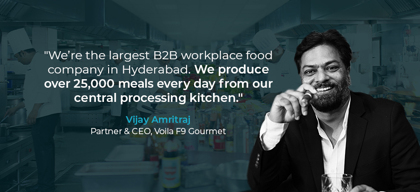Changed consumers, new expectations

Retail
108 week ago — 7 min read
Consumers had to adjust their buying habits almost overnight. Fundamental changes to their expectations soon followed. Accenture’s recent survey of more than 25,000 consumers across 22 countries and follow-up focus groups in five countries revealed that 50% of consumers were compelled to rethink their purpose and re-evaluate what’s important to them in life. This is reflected in their buying habits and the kind of experience they now seek.
The pandemic accelerated the adoption of countless experiences and concessions that retail businesses introduced. Although these were temporary, they have unpredictably translated into long-term expectations that consumers never knew they had. Some of the new consumer preferences are.
Here’s what consumers find important today.
Ethics
Speaking about a big shift in the way consumers look at a brand and what they expect from it, Lalit Agarwal, MD, V-Mart Retail Ltd. said, “Since all have experienced change, consumers have started looking at things differently. More and more consumer thoughts are moving to ethics. Ethos is changing because they’ve seen death closely. The consumer wants to connect with a retailer and when doing so s/he looks at the goodwill, the ethics, HR and employee practices, governance and sustainability.” This shift towards ethical retailing has put a lot of responsibility on retailers who now are under the scanner not just for their products and services but their behaviour and culture as a business. Agarwal added that a retailer’s community is being looked at too.
Sustainability
Be it in the way a product is manufactured, sourced, moved or sold, sustainability matters to consumers. “Globally, sustainability has become top of the mind for all- customers, manufacturers as well as retailers. Wither it is using organic cotton, recycled material or any other method which significantly minimises the environmental impact of the product. Customers are even willing to pay more for it,” said Rajesh Jain, Managing Director and CEO, Lacoste India reiterating the growing trend.
Seamless Omnichannel
“New Vitamin D for retail are Digital and Data,” pointed out Ranjeet Kohli, President & Chief Business Officer, Domino’s (Jubilant FoodWorks Ltd.). Mukul Bafana, Co-founder & CEO, Omuni (Arvind Internet) added that “Digital storefronts have become the new wave in the last 2 years.” Digital has emerged as an important channel of connecting with the consumers who expect every retailer to be available online as well as offline. “Today, customers are looking at a seamless omnichannel experience. Their expectations have undergone a serious change in this regard,” said Jain of Lacoste India. Adding to that Prashant Lohia, CEO and Founder, Ginesys said, “If there is no seamless, there is no experience. If the systems are broken, there is no experience.”
Faster delivery
With omnichannel becoming a part of life for consumers, delivery becomes a key differentiator for them. Competition is therefore heating up in this segment. Kohli shared that during the lockdowns, the delivery team at Domino’s started delivering essentials that too in flat 30 minutes. This kind of speed is what consumers have come to expect and brands that are not able to keep up with the expectations stand to lose to competitors who can.
Socialising
“Socialising has made a vigorous comeback,” observed Anupam Bansal, Director, Liberty Shoes Ltd. Having made a similar observation, Darpan Kapoor, Chairman, Kapsons said, “Customers are coming to stores to experience the product but more so to interact with people.”
Concurring to this trend, Jain shared that before the pandemic consumers used to go out with a specific purpose in mind, which was to buy some item they needed or for the joy of shopping itself. “However, after experiencing severe lockdowns and having been deprived of human contact, people now go out to socialise—that is the primary objective. Shopping, eating out or watching a cinema has become incidental to that socialising,” he said.
Post-purchase experience
Just two years back pre-purchase drivers like price, assortment, access, convenience drove consumers to try different channels or ways of shopping. Today, the focus is increasingly on post-purchase experience. “Consumers are saying I have seen the gold standard in shopping what can you do after that for me?” said Bafana. Every step beyond checkout can be considered as part of the post-purchase experience or PPX, this includes communication while leaving the store/site, messaging that they receive, tracking, shipping, pre-delivery anxiety, exchange, returns and everything in between the second purchase.
Today, experience is much more than just how a retail brand makes a customer feel at a store. It is a sum of experiences across many parts and touchpoints. To be able to keep up with the expectations about the experience and delight consumers, retailers have to work on many areas. “Every element of the business including HR, operations everything has to evolve. This evolution is happening faster than we are making decisions. So, we need to innovate faster and fail faster and learn faster. In the next 2 - 3 years, those who can change constantly, invest money and learn from failures will grow very fast,” shared Ayushmaan Kapoor, Founder & COO, Xeno.
Also read: Winning ways
Article source: STOrai Magazine. Based on the panel discussion ‘The X-Factor: Shifts in Consumers’ Expectations about Experience’ moderated by Dr Hitesh Bhatt, Director – Marketing & Communication, Retailers Association of India at Retail India Summit & Expo (RISE) 2021.
Image source: Canva
Disclaimer: The views and opinions expressed in this article are those of the author and do not necessarily reflect the views, official policy or position of GlobalLinker.
Most read this week


















Comments
Please login or Register to join the discussion